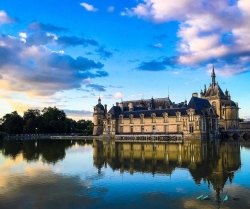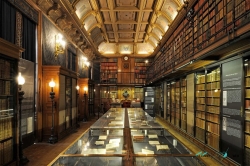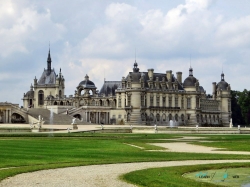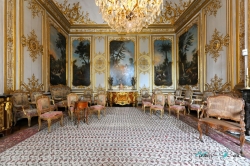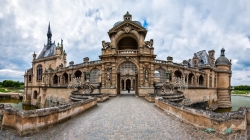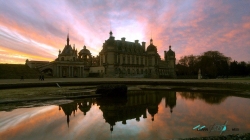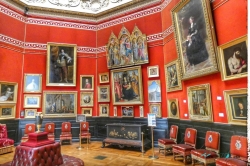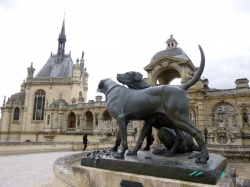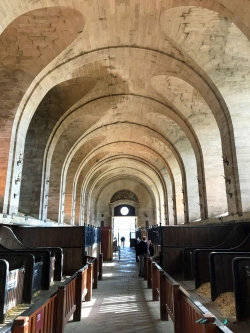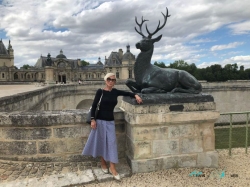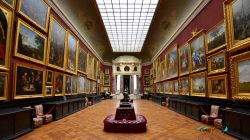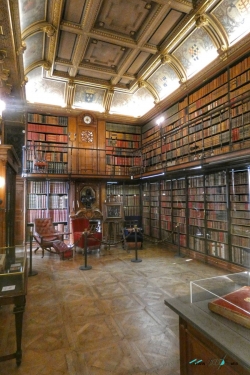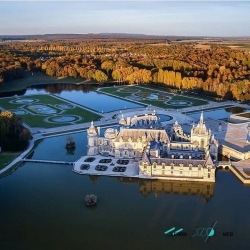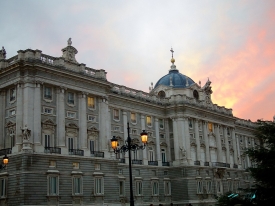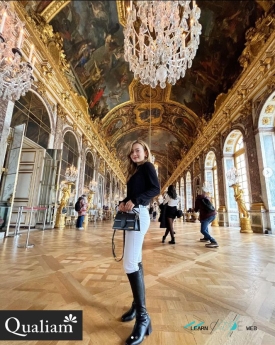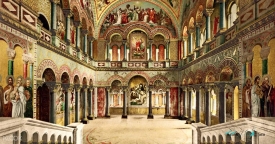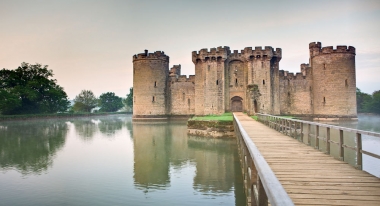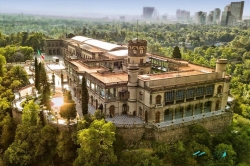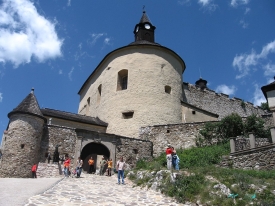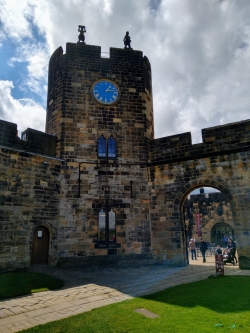ABOUT Château de Chantilly
The Château de Chantilly is an iconic landmark nestled in the town of Chantilly, Oise, just 50 kilometers (30 miles) north of Paris. This historic château, now owned by the Institut de France, offers visitors a glimpse into France’s rich cultural past.
The site comprises two main buildings: the Petit Château, constructed around 1560 for Anne de Montmorency, and the Grand Château, which was destroyed during the French Revolution and later rebuilt in the 1870s by Henri d'Orléans, Duke of Aumale. The château’s connection to the Montmorency family dates back to 1484, marking the beginning of its storied history.
The Petit Château was likely designed by Jean Bullant, a prominent architect of the period. The Grand Château, originally built between 1528 and 1531 by Pierre Chambiges, was known for its grandeur. Although it was destroyed, it was magnificently restored, featuring designs by Honoré Daumet.
The estate’s history is enriched by notable events and figures. In 1659, the famed playwright Molière premiered his play "Les Précieuses ridicules" at the château. The memoirs of Madame de Sévigné recount the tragic story of François Vatel, the maître d'hôtel, who committed suicide during a visit by King Louis XIV due to a delayed dinner service.
Declared a historic monument in 1988, the Château de Chantilly is open to visitors, offering a chance to explore its majestic interiors and extensive gardens. The estate also features a Horse Museum, located in the stunning Grand Stables, where visitors can learn about the rich equestrian traditions of Chantilly.
Easily accessible from Paris, a visit to the Château de Chantilly provides a perfect day trip to experience the grandeur of French heritage. Whether you’re an art lover, history buff, or simply looking to enjoy beautiful architecture and gardens, Chantilly offers something for everyone.
The Château de Chantilly is more than just a historic building; it’s a symbol of France’s enduring cultural legacy. With its magnificent art collections, captivating history, and architectural splendor, it remains a vital destination for those looking to immerse themselves in the rich tapestry of French history.
The site comprises two main buildings: the Petit Château, constructed around 1560 for Anne de Montmorency, and the Grand Château, which was destroyed during the French Revolution and later rebuilt in the 1870s by Henri d'Orléans, Duke of Aumale. The château’s connection to the Montmorency family dates back to 1484, marking the beginning of its storied history.
The Petit Château was likely designed by Jean Bullant, a prominent architect of the period. The Grand Château, originally built between 1528 and 1531 by Pierre Chambiges, was known for its grandeur. Although it was destroyed, it was magnificently restored, featuring designs by Honoré Daumet.
Musée Condé: A Treasure Trove of Art
One of the château’s highlights is the Musée Condé, which houses one of France’s finest collections of 15th and 16th-century art. The museum is renowned for its French paintings and book illuminations, making it a must-visit for art enthusiasts. Among its treasures are works by cabinetmaker André-Charles Boulle, showcasing exquisite craftsmanship.The estate’s history is enriched by notable events and figures. In 1659, the famed playwright Molière premiered his play "Les Précieuses ridicules" at the château. The memoirs of Madame de Sévigné recount the tragic story of François Vatel, the maître d'hôtel, who committed suicide during a visit by King Louis XIV due to a delayed dinner service.
Declared a historic monument in 1988, the Château de Chantilly is open to visitors, offering a chance to explore its majestic interiors and extensive gardens. The estate also features a Horse Museum, located in the stunning Grand Stables, where visitors can learn about the rich equestrian traditions of Chantilly.
Easily accessible from Paris, a visit to the Château de Chantilly provides a perfect day trip to experience the grandeur of French heritage. Whether you’re an art lover, history buff, or simply looking to enjoy beautiful architecture and gardens, Chantilly offers something for everyone.
The Château de Chantilly is more than just a historic building; it’s a symbol of France’s enduring cultural legacy. With its magnificent art collections, captivating history, and architectural splendor, it remains a vital destination for those looking to immerse themselves in the rich tapestry of French history.
The Best Pictures of Château de Chantilly
Videos of Château de Chantilly









